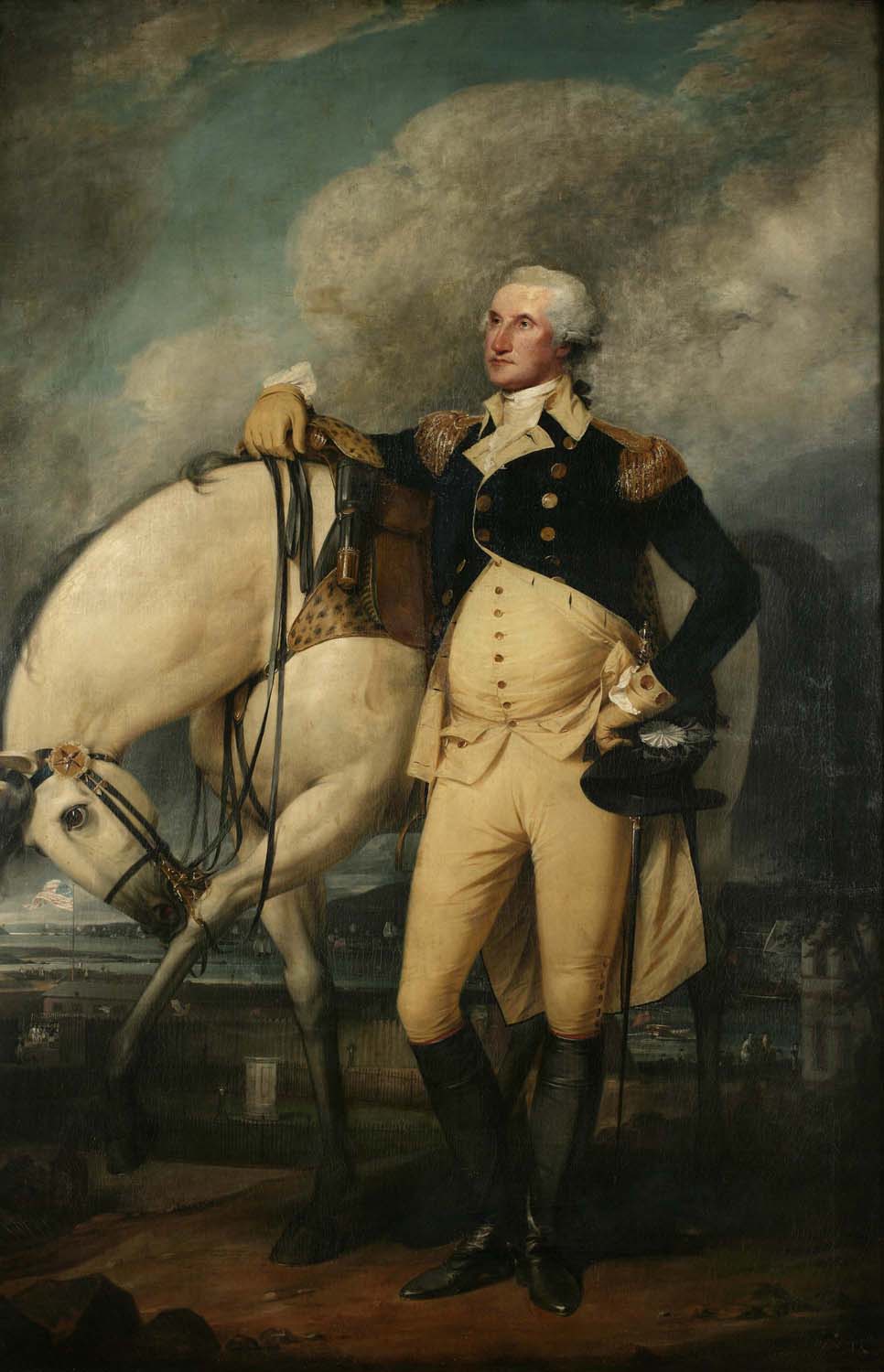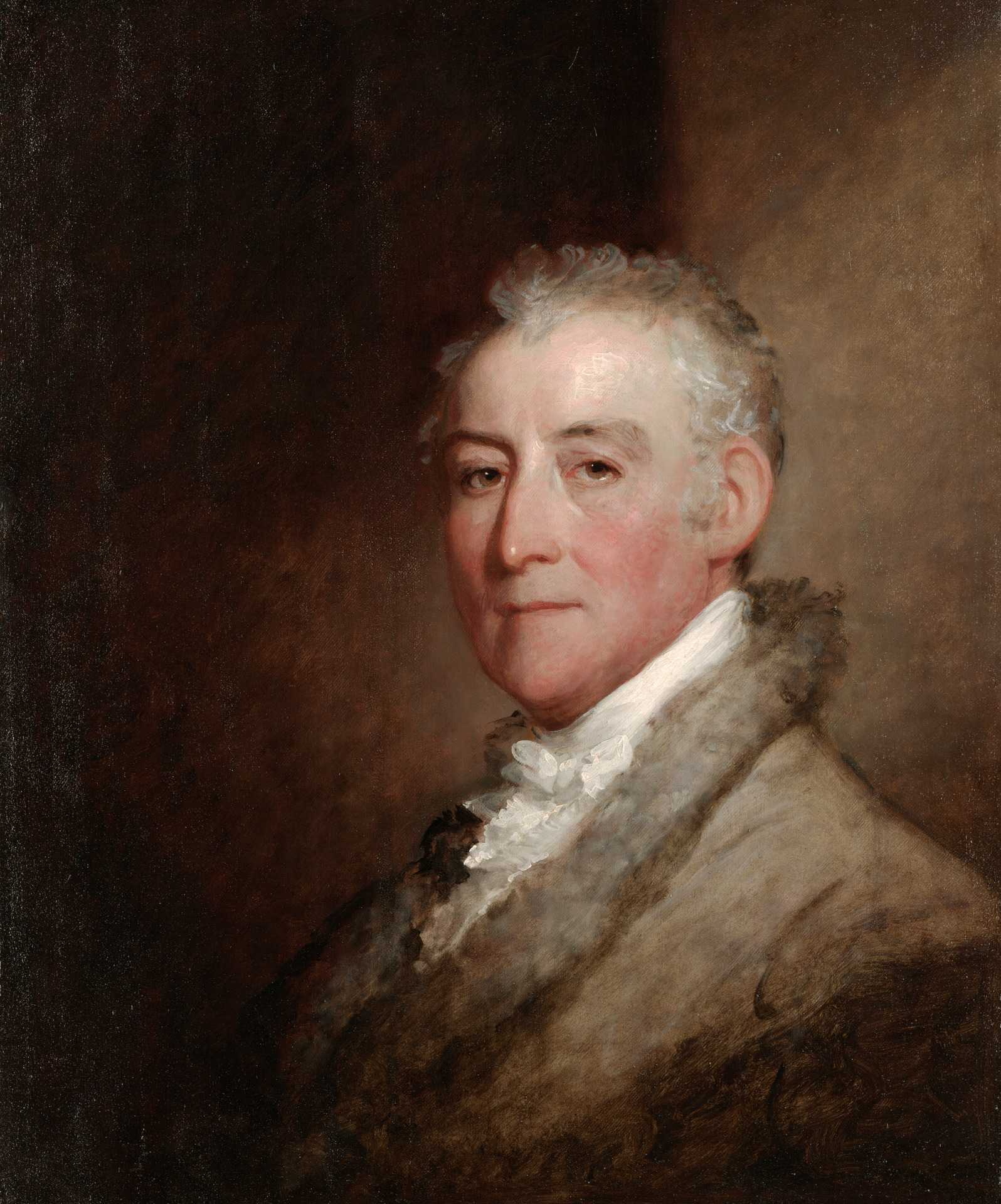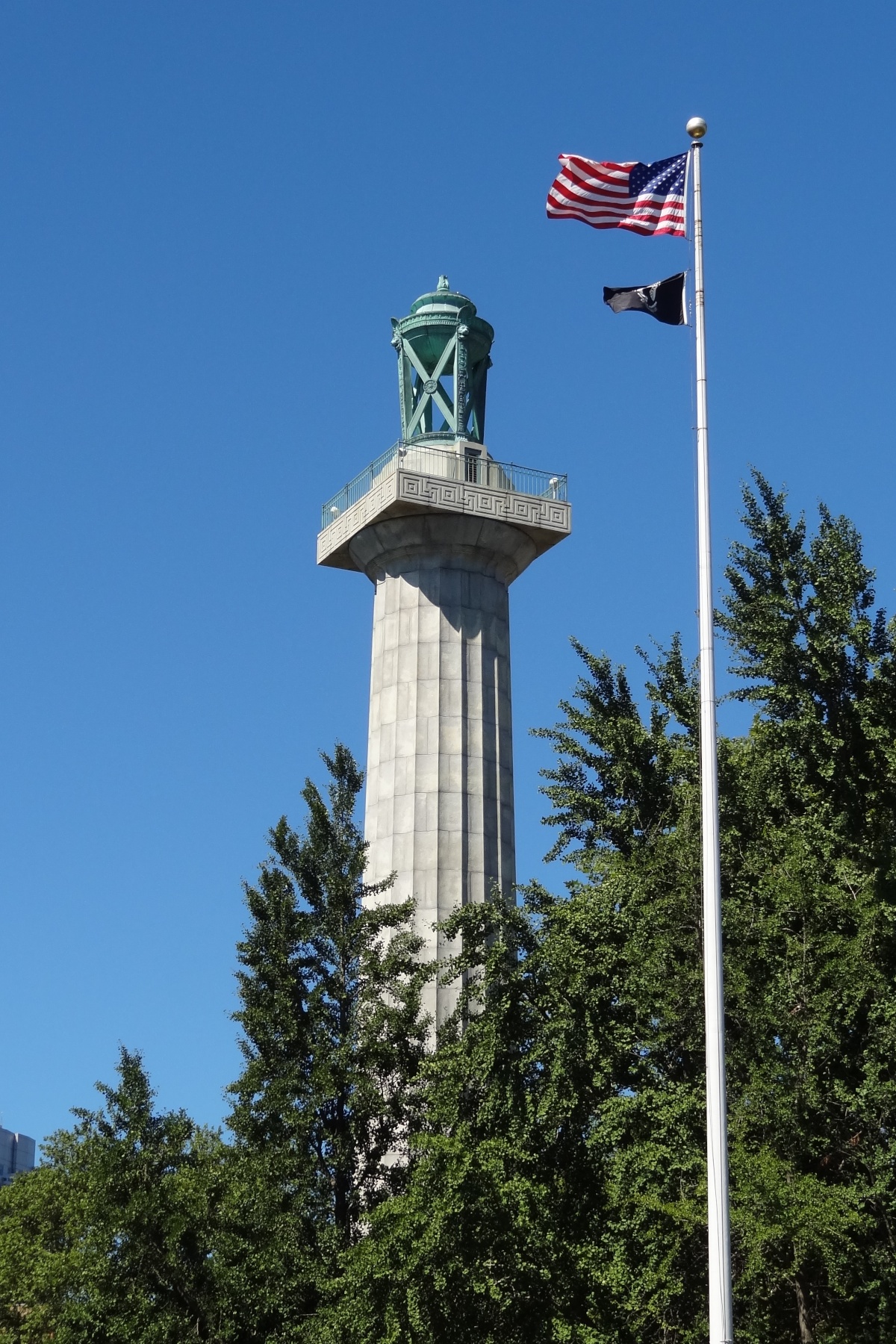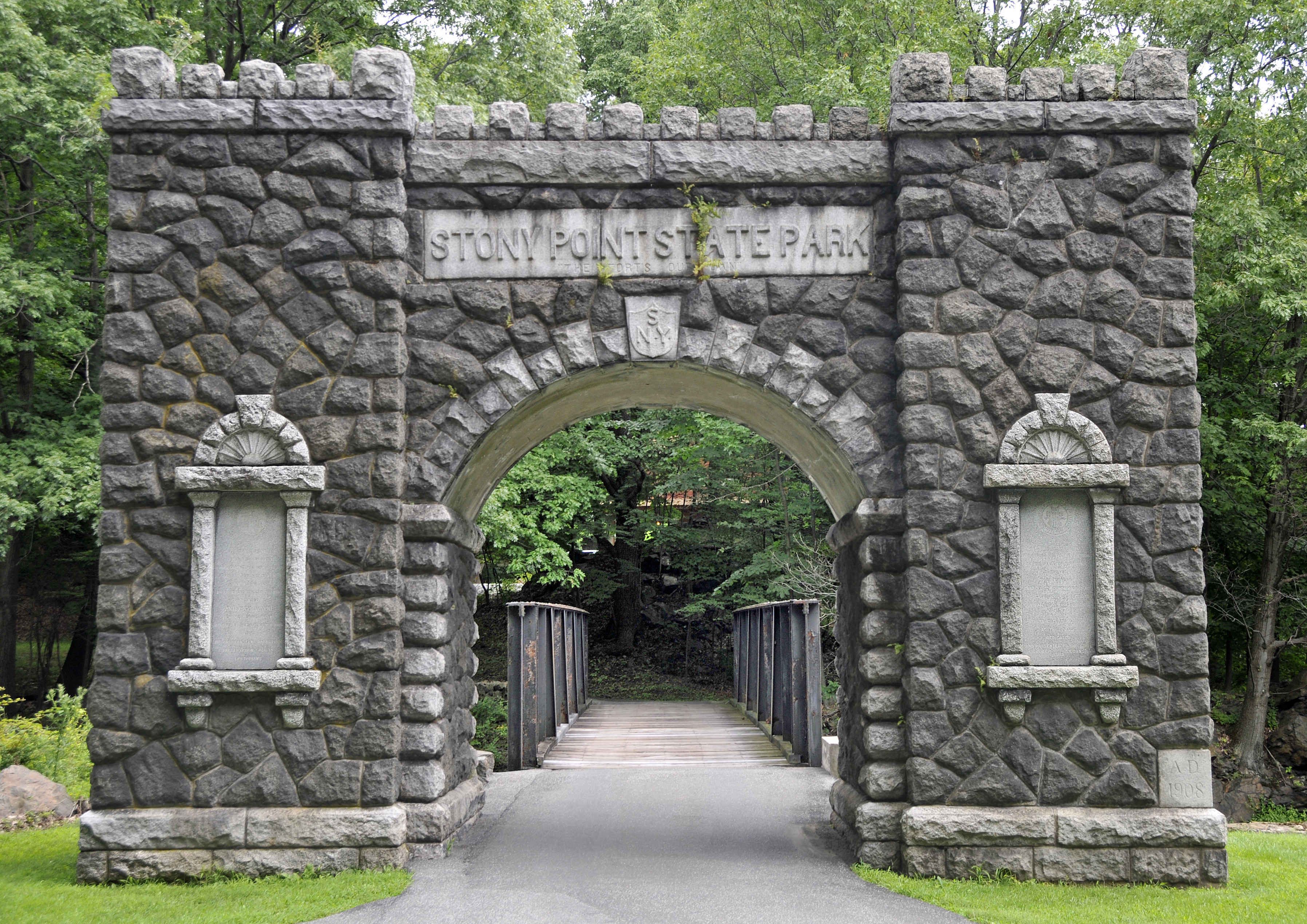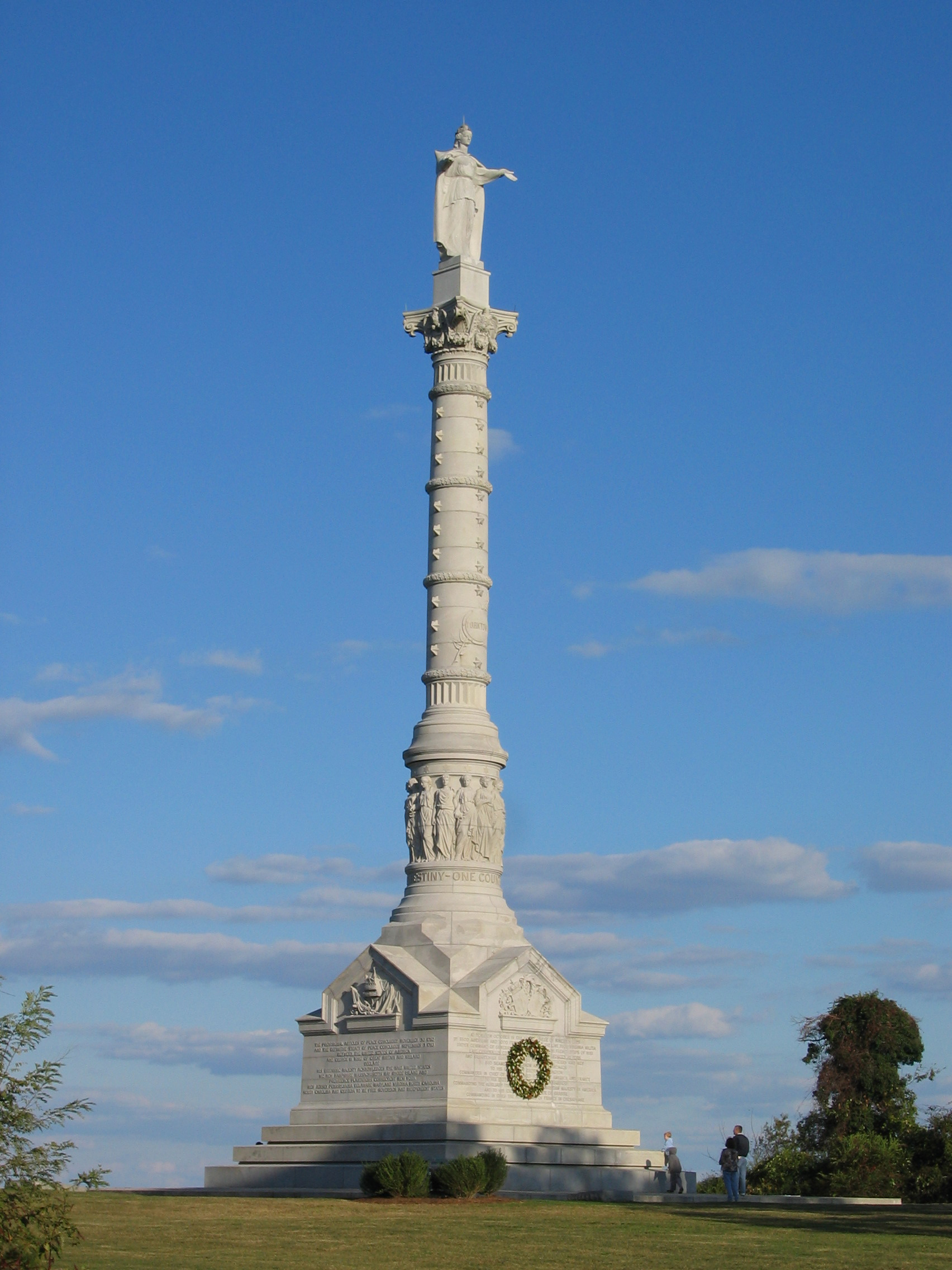|
Washington at Verplanck's Point
''Washington at Verplanck's Point'' is a full-length portrait in oil painted in 1790 by the American artist John Trumbull of General George Washington at Verplanck's Point on the North River in New York during the American Revolutionary War. The background depicts the September 14, 1782 review of Continental Army troops Washington staged there as an honor for the departing French commander Comte de Rochambeau and his army. The painting was a gift from Trumbull to the president's wife, Martha Washington, and is now owned by the Winterthur Museum. Trumbull next received a commission from the City of New York and painted a much larger version, ''George Washington'', with a new background, Evacuation Day of New York City, November 25, 1783, the return of Washington and the departure of British forces. It is on display in the Governor's Room of New York City Hall. Description General George Washington is in full military uniform, a blue coat over buff waistcoat and pants. He is s ... [...More Info...] [...Related Items...] OR: [Wikipedia] [Google] [Baidu] |
John Trumbull
John Trumbull (June 6, 1756November 10, 1843) was an American artist of the early independence period, notable for his historical paintings of the American Revolutionary War, of which he was a veteran. He has been called the "Painter of the Revolution". Trumbull's ''Declaration of Independence (Trumbull), Declaration of Independence'' (1817), one of his four paintings that hang in the United States Capitol rotunda, is used on the reverse of the current United States two-dollar bill. Early life Trumbull was born in Lebanon, Connecticut, in 1756, to Jonathan Trumbull and Faith (née Robinson) Trumbull. His father served as governor of Connecticut from 1769 to 1784. Both sides of his family were descended from early Puritan settlers in the state. He had two older brothers, Joseph Trumbull (commissary general), Joseph Trumbull, the first commissary general of the Continental Army in the Revolutionary War, and Jonathan Trumbull Jr., who became the second Speaker of the House of the ... [...More Info...] [...Related Items...] OR: [Wikipedia] [Google] [Baidu] |
Evacuation Day (New York)
Evacuation Day on November 25 marks the day in 1783 when the British Army departed from New York City on Manhattan Island, after the end of the American Revolutionary War. In their wake, General George Washington triumphantly led the Continental Army from his headquarters north of the city across the Harlem River, and south through Manhattan to the Battery at its southern tip. History Background Following the significant losses at the Battle of Long Island on August 27, 1776, General George Washington and the Continental Army retreated across the East River by benefit of both a retreat and holding action by well-trained Maryland Line troops at Gowanus Creek and Canal and a night fog which obscured the barges and boats evacuating troops to Manhattan Island. On September 15, 1776, the British flag replaced the American atop Fort George, where it was to remain until Evacuation Day. Washington's Continentals subsequently withdrew north and west out of the town and following the ... [...More Info...] [...Related Items...] OR: [Wikipedia] [Google] [Baidu] |
George Washington Parke Custis
George Washington Parke Custis (April 30, 1781 – October 10, 1857) was an American plantation owner, antiquarian, author, and playwright. His father John Parke Custis was the stepson of George Washington. He and his sister Eleanor grew up at Mount Vernon and in the Washington presidential household. Upon reaching age 21, Custis inherited a large fortune from his late father, John Parke Custis, including a plantation in what became Arlington, Virginia. High atop a hill overlooking the Potomac River and Washington, D.C., Custis built the Greek Revival mansion Arlington House (1803–18), as a shrine to George Washington. There he preserved and displayed many of Washington's belongings. Custis also wrote historical plays about Virginia, delivered a number of patriotic addresses, and was the author of the posthumously published ''Recollections and Private Memoirs of George Washington'' (1860). His daughter, Mary Anna Randolph Custis, married Robert E. Lee. They inherited A ... [...More Info...] [...Related Items...] OR: [Wikipedia] [Google] [Baidu] |
Mount Vernon
Mount Vernon is an American landmark and former plantation of Founding Father, commander of the Continental Army in the Revolutionary War, and the first president of the United States George Washington and his wife, Martha. The estate is on the banks of the Potomac River in Fairfax County, Virginia. It is located south of Washington, D.C., and Alexandria, Virginia, and is across the river from Prince George's County, Maryland. The Washington family acquired land in the area in 1674. Around 1734, the family embarked on an expansion of its estate that continued under George Washington, who began leasing the estate in 1754 before becoming its sole owner in 1761. The mansion was built of wood in a loose Palladian style; the original house was built by George Washington's father Augustine, around 1734. George Washington expanded the house twice, once in the late 1750s and again in the 1770s. It remained Washington's home for the rest of his life. Following his death in 1799, und ... [...More Info...] [...Related Items...] OR: [Wikipedia] [Google] [Baidu] |
Henry Francis Du Pont
Henry Francis du Pont (May 27, 1880 – April 11, 1969) was an American horticulturist, collector of early American furniture and decorative arts, breeder of Holstein Friesian cattle, and scion of the powerful du Pont family. Converted into a museum in 1951, his estate of Winterthur Museum, Garden and Library, Winterthur in Delaware is the world's premier museum of American furniture and decorative arts. Early life and education Henry was born on May 27, 1880, at Winterthur. He was the only son of Henry A. du Pont, Henry Algernon du Pont and Mary Pauline Foster to live to maturity; by the time he was born, his parents had already buried five children. Their only other surviving child, Louise E. du Pont Crowninshield, was a historic preservationist and founding trustee of the National Trust for Historic Preservation. A shy and lonely boy who contrasted with his authoritarian father, young du Pont attended boarding school at Groton School in Massachusetts. After graduating fro ... [...More Info...] [...Related Items...] OR: [Wikipedia] [Google] [Baidu] |
Elizabeth Parke Custis Law
Elizabeth (Eliza) Parke Custis Law (August 21, 1776 – December 31, 1831)"Obituary: Elizabeth Parke Custis Law", ''Richmond Enquirer'', 3 January 1832 was the eldest granddaughter of Martha Dandridge Washington and a step-grandchild of George Washington. She married Thomas Law, the youngest son of the late bishop of Carlisle, England, and an experienced administrator with the East India Company. Eliza Law became a social leader in the District of Columbia, and she worked to preserve the Washington family heritage. She and her husband separated in 1804 and divorced in 1811. They had one daughter who survived infancy and three grandchildren. Early life Elizabeth Parke Custis was born on 21 August 1776. She was the eldest daughter of John Parke Custis, the son of Martha Washington and her first husband, Daniel Parke Custis; and his wife Eleanor Calvert, the daughter of Benedict Swingate Calvert and his wife Elizabeth Calvert. She was also the eldest grandchild of Martha Washington a ... [...More Info...] [...Related Items...] OR: [Wikipedia] [Google] [Baidu] |
Mount Vernon Ladies' Association
The Mount Vernon Ladies' Association (MVLA) is a non-profit organization that preserves and maintains the Mount Vernon estate originally owned by the family of President George Washington. The association was founded in 1853 by Ann Pamela Cunningham of South Carolina, and is the oldest national historic preservation organization – as well as the oldest patriotic women's society – in the United States. Cunningham appointed 30 vice regents nationwide – one woman per state – who together raised $200,000 to purchase the property (equivalent to $4.1 million in 2003 dollars). The MVLA took over operation of the Mount Vernon estate on February 22, 1860, and opened the site as a museum. Through historic preservation of a national symbol, the Mount Vernon Ladies' Association hoped to transcend or "heal" the sectional divisions that were deepening over the issue of slavery in the United States. During the American Civil War, the MVLA's restoration efforts were put on hold, but re ... [...More Info...] [...Related Items...] OR: [Wikipedia] [Google] [Baidu] |
Hudson Highlands
The Hudson Highlands are mountains on both sides of the Hudson River in New York state lying primarily in Putnam County on its east bank and Orange County on its west. They continue somewhat to the south in Westchester County and Rockland County, respectively. North to south they fall between Newburgh Bay and Haverstraw Bay, the latter forming the northern region of the New York - New Jersey Highlands. The Hudson River enters this region in the south at Dunderberg Mountain near Stony Point, and from the north in the vicinity of Breakneck Ridge and Storm King Mountain near Cornwall, New York. These highlands have played a significant role in America's environmental, cultural, and military history. Geology The bedrock of the Highlands is part of the Reading Prong and more than a billion years old, formed during the Grenville Orogeny. It represents the very core of the Appalachian range, which has been formed by successive mountain-building events ( orogenies). The present mou ... [...More Info...] [...Related Items...] OR: [Wikipedia] [Google] [Baidu] |
Stony Point, New York
Stony Point is a Administrative divisions of New York#Town, town in Rockland County, New York, United States. It is part of the New York City Metropolitan Area. The town is located north of the town of Haverstraw, New York, Haverstraw, east and south of Orange County, New York, Orange County, and west of the Hudson River and Westchester County, New York, Westchester County. The population was 15,059 at the 2010 census. The name of the town is derived from a prominent projection into the Hudson River. The town is in the northeastern part of the county. U.S. Route 9W, U.S. Route 202 in New York, U.S. Route 202, and the Palisades Interstate Parkway are major north-south routes through the town. Stony Point is included in the North Rockland Central School District. It is the most rural of the five towns in Rockland County. Life in Stony Point, NY Stony Point, New York is a town that many call home for the suburban style vibe. The town contains numerous strip malls alongside Rout ... [...More Info...] [...Related Items...] OR: [Wikipedia] [Google] [Baidu] |
Siege Of Yorktown
The Siege of Yorktown, also known as the Battle of Yorktown, the surrender at Yorktown, or the German battle (from the presence of Germans in all three armies), beginning on September 28, 1781, and ending on October 19, 1781, at Yorktown, Virginia, was a decisive victory by a combined force of the American Continental Army troops led by General George Washington and Gilbert du Motier, Marquis de Lafayette, and French Army troops led by Comte de Rochambeau over British Army troops commanded by British peer and Lieutenant General Charles Cornwallis. The culmination of the Yorktown campaign, the siege proved to be the last major land battle of the American Revolutionary War in the North American region, as the surrender by Cornwallis, and the capture of both him and his army, prompted the British government to negotiate an end to the conflict. In 1780, about 5,500 French soldiers landed in Rhode Island to help their American allies fight the British troops controlling New York Cit ... [...More Info...] [...Related Items...] OR: [Wikipedia] [Google] [Baidu] |
Yorktown, Virginia
Yorktown is a census-designated place (CDP) in York County, Virginia. It is the county seat of York County, one of the eight original shires formed in colonial Virginia in 1682. Yorktown's population was 195 as of the 2010 census, while York County's population was 66,134 in the 2011 census estimate. The town is most famous as the site of the siege and subsequent surrender of General Charles Cornwallis to General George Washington and the French Fleet during the American Revolutionary War on October 19, 1781. Although the war would last for another year, this British defeat at Yorktown effectively ended the war in North America. Yorktown also figured prominently in the American Civil War (1861–1865), serving as a major port to supply both northern and southern towns, depending upon who held Yorktown at the time. Yorktown is one of three sites of the Historic Triangle, which also includes Jamestown and Williamsburg as important colonial-era settlements. It is the eastern te ... [...More Info...] [...Related Items...] OR: [Wikipedia] [Google] [Baidu] |
Expédition Particulière
''Expédition Particulière'' (English: Special Expedition) was the codename given by the Kingdom of France for the plan to sail French land forces to North America to support the colonists against Britain in the American Revolutionary War. Numbering 5,500 troops, the Expedition arrived in America on 11 July 1780, led by the Comte de Rochambeau. Another 2,500 men were intended to join the war effort, but could not escape the British blockade of Brest. After remaining inactive for almost a year, Rochambeau marched his troops south to rendezvous with George Washington's Continental Army for a planned attack on New York City. At Rochambeau's urging, Washington abandoned the planned attack and instead they moved into Virginia to join with the French fleet of Admiral François de Grasse to trap Lord Cornwallis's British army at Yorktown; the subsequent Franco-American siege ended in British surrender in October 1781, which hastened negotiations towards a peace treaty ending the war. B ... [...More Info...] [...Related Items...] OR: [Wikipedia] [Google] [Baidu] |
